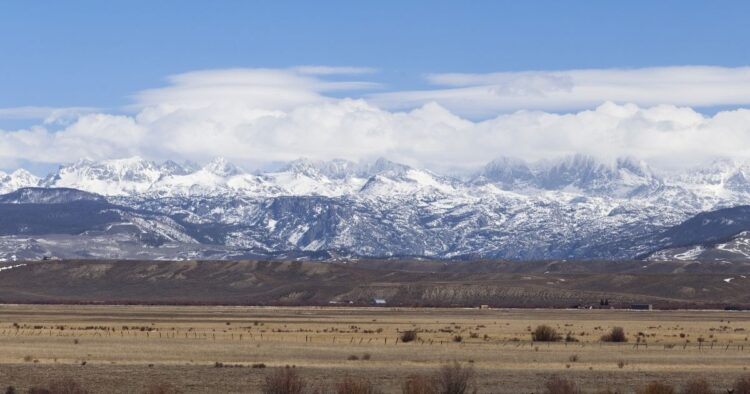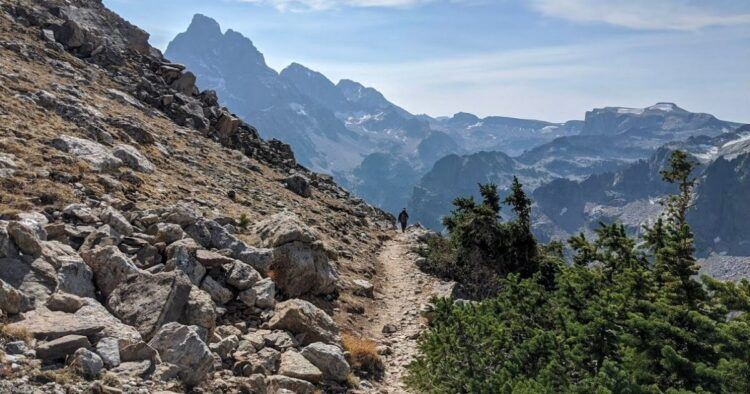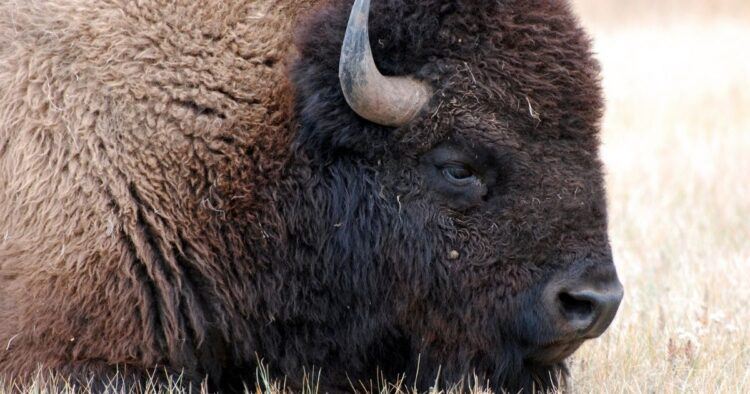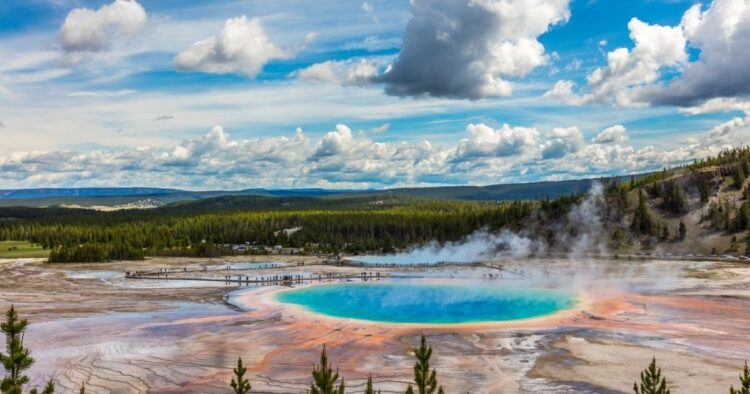This post may contain affiliate links. As an Amazon Associate I earn from qualifying purchases.
* * *
I’ve been a long-time advocate for shoulder season travel. More often than not, you get smaller crowds and lower prices with only minor trade-offs. Visiting Yellowstone in September is no exception and in fact, fall might be the best time of year to go. Not only will you get traditional shoulder-season benefits, but there are a few reasons to seek fall out specifically.
If you have the ability to travel in September rather than during peak summer vacation, here’s why I think it’s worth considering.
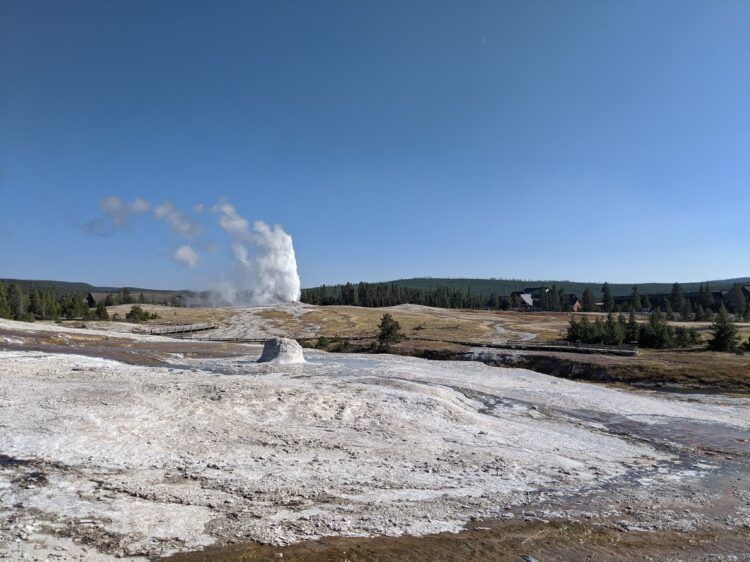
Advantages of Visiting Yellowstone in September
Elk are Bugling
Hearing an elk bugle was the number one reason we booked a September trip to Yellowstone. Even though I’ve seen quite a few elk on other trips, I’d never heard them. I figured that going in the fall gave me a good shot, even if it wasn’t guaranteed.
Turns out, we didn’t even have to try to hear any bugling. The elk rut (mating season) lasts more or less all month and it wasn’t hard to find. The area around Mammoth Lodge is known for spotting elk at sunset, but we preferred the Hayden Valley at sunrise. Same bugling, with more of a “wild” feel than a tourist trap.
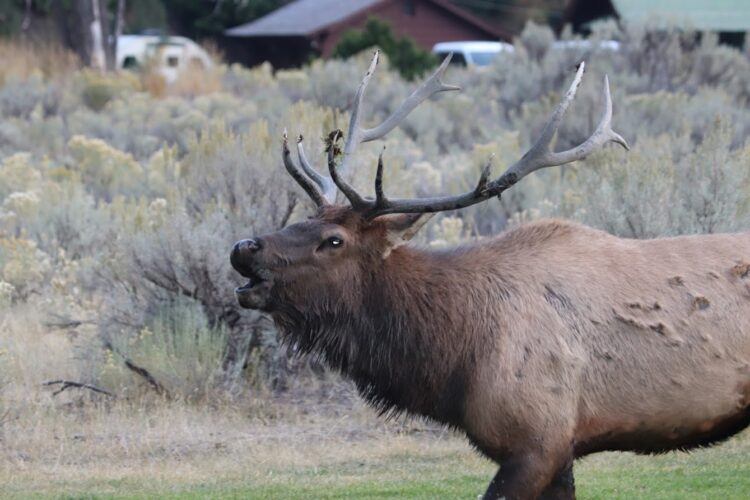
If you’ve never heard an elk bugle before, let me warn you: this is not a musical treat. It’s a high-pitched screech that only a female elk could love. Still, it’s fascinating!
Lots of Wildlife-Spotting Opportunities
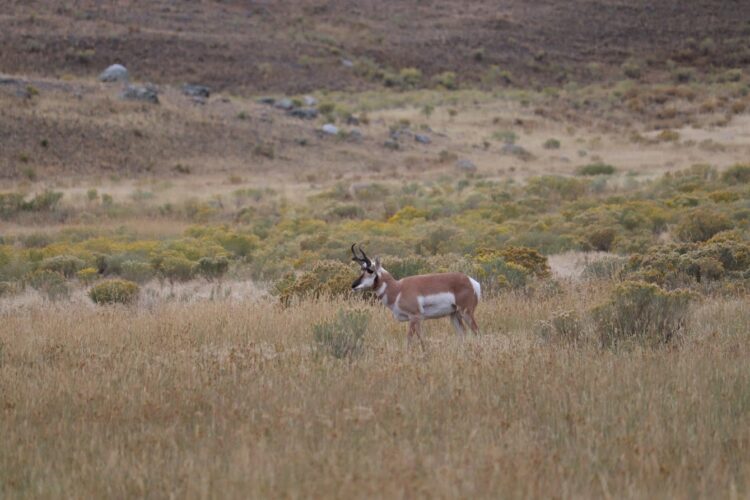
The elk are just the beginning of wildlife opportunities in this part of Wyoming. The park is home to numerous species year-round, but they’re particularly active in Yellowstone in the fall. Bison, mule deer, and moose are also moving around, although the bison rut typically runs in late August. Bears are actively foraging before winter hibernation and we saw a number of raptors in the park as well.
Perhaps one of the other advantages to seeking wildlife this time of year is that it’s easier to be out and about when the animals are most active. Year-round, animals tend to move around most at dawn and dusk. In September, the shorter days means it’s relatively easy to be exploring without imposing too much on your precious vacation sleep. It’s a lot easier to start at 7am in September than 5am in July!
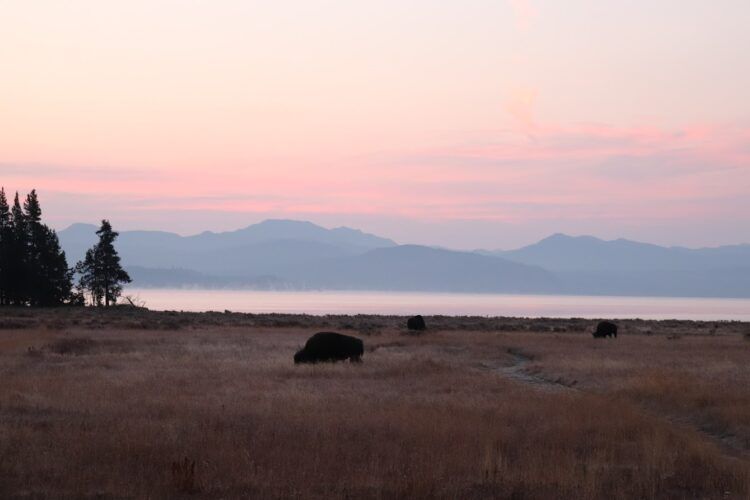
Fall Colors are Out
I’ll be honest: if leaf-peeping is your number one goal, there are better destinations than Yellowstone. The park has a lot of evergreens and it can’t compare to the multicolored canvas of the northeast USA. However, there are still enough fall colors to add some interest to your views.
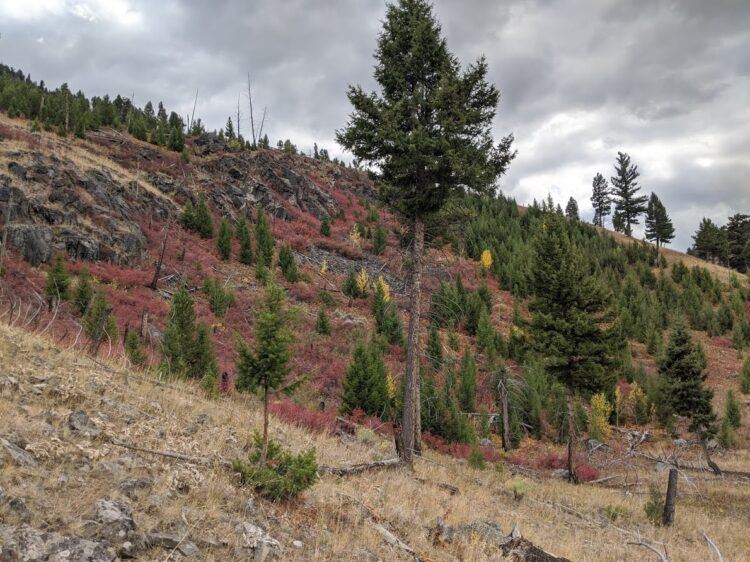
There are some golden aspens, but we also noted red-leafed shrubs and yellow grasses. We were in Yellowstone around September 20 and this year, it seemed a little too early for peak fall colors still. Other years, of course, could be different — nature is unpredictable after all. I’d aim for mid-to-late September if you’re hoping to time things for peak foliage.
The Bugs are Gone
In my experience, places with short summers have the worst bugs. They’re all in abundance at the same time, one hatch overlapping with the next, and the constant swarming can take a lot of enjoyment out of your visit unless you’re spending all day in the car.
But, by September, the bugs have basically all died out for the season. Hiking was a dream with no mosquitoes or flies buzzing around us. With all of Yellowstone’s water, tons of reviews mention how many bugs other visitors deal with (there are thermal pools, lakes, rivers, and creeks — not to mention standing snowmelt in the spring).
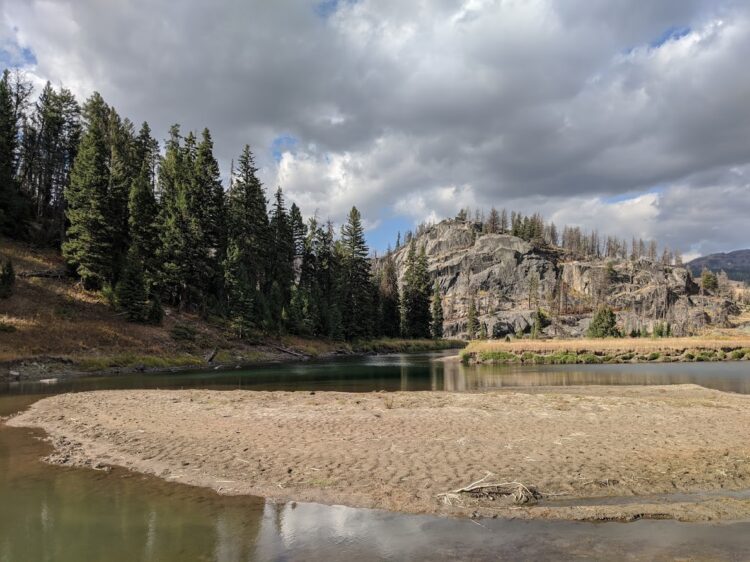
Crowds are Smaller
2020 is not a good example of this. With the pandemic, Yellowstone was busier than ever and September was no exception.
However, if you look at visitation statistics from prior years, it’s easy to see that there are fewer visitors in September than over the peak summer months. That means fewer people at photo stops, easier access to parking lots, fewer traffic jams, and less people on the trail.
If you really want to escape the crowds, you’ll have to travel October-April. Is it worth waiting to visit Yellowstone in October? Maybe — there’s definitely fewer people, but the bison rut is long over and the elk rut is slowing down (ends early in the month). And the disadvantages I’m sharing below will become even more prevalent.
Disadvantages of Visiting Yellowstone in September
Weather is Unpredictable
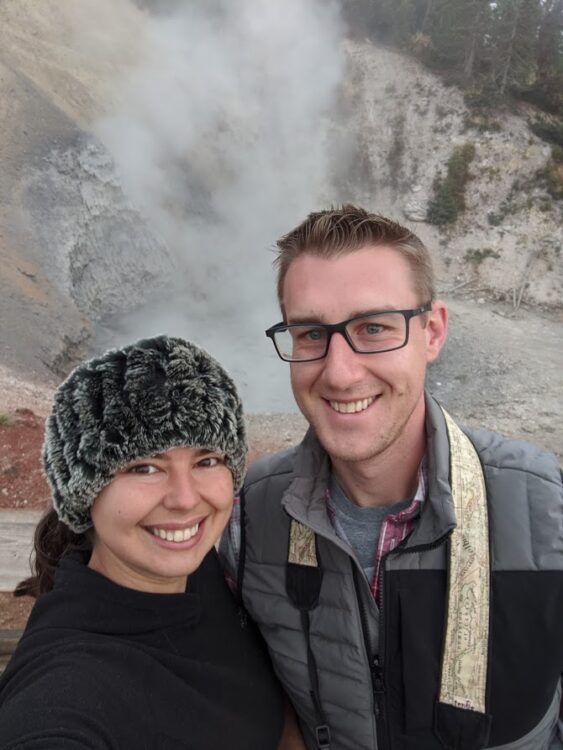
September weather in Yellowstone can be all over the place. This year, it snowed over Labor Day and some roads were temporarily closed. There were crazy windstorms. And then…it got beautiful: sunny, 70-degree days with blue skies as far as the eye could see.
You’ll notice that September 2020 had a low of 18°F and a high of 82°F. For travelers planning a trip months in advance, that makes it hard to plan.
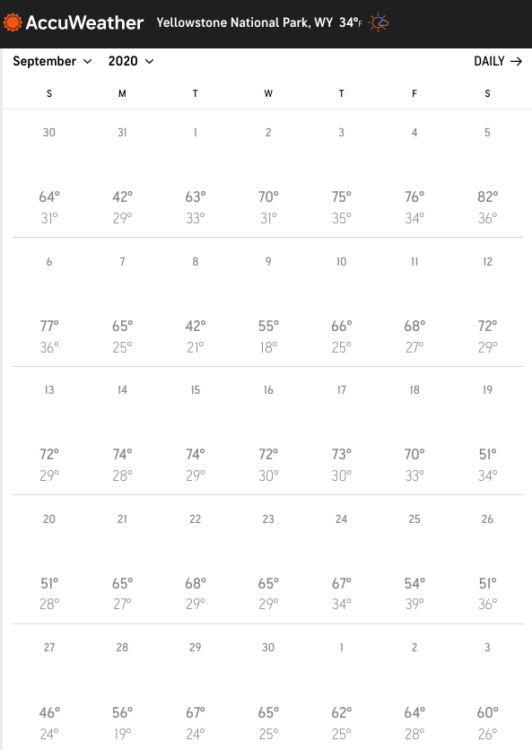
In my opinion, you can pack strategically so that you can enjoy your days outside no matter the temperature. However, the possibility of road closures in case of a stray snowstorm can be a big deal: detours can be hours long. Don’t plan your days too tightly if you have a plane to catch!
Services May Be Closed
Park amenities and services start to close down in September at Yellowstone. Boating services on Yellowstone Lake shut down around mid-September and about half the campgrounds close beginning around the middle of the month. Some restaurants begin to close (or reduce hours) as well. Services outside the park — tour guides and restaurants, for example — may also begin reducing hours.
Visitors that plan ahead won’t find these closures disruptive, but it means you’ll need to be prepared in advance with whatever you need. Schedule strategically!
Days are Shorter
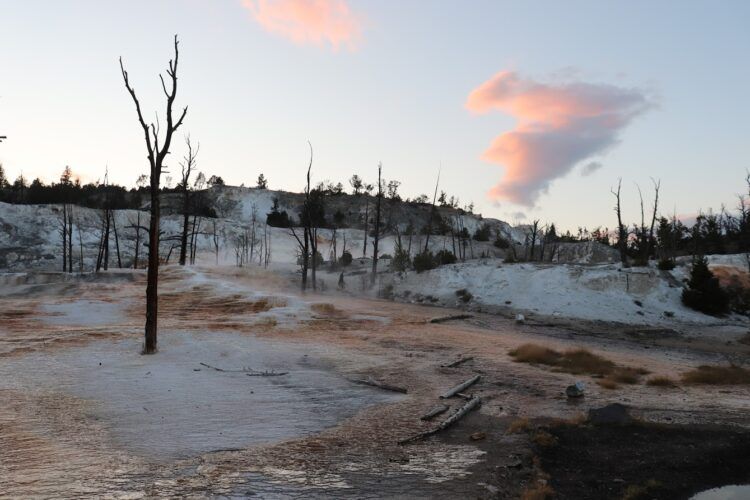
In September, the average day has about 12.5 hours of daylight. That sounds like plenty for the average tourist but it’s significantly shorter than May through July and means you’ll have fewer options.
This is another case where planning ahead can turn this disadvantage into a non-event. Perhaps you’ll want to stay in the park, so you don’t have a long commute cutting into your daylight hours. Maybe you’ll add an extra day to your trip so you have plenty of time to fit everything in. Or maybe you’ll use those extra hours of darkness to prep a picnic lunch for the next day so you can be on the road at first light.
My husband’s not an early bird, so he grumbled a little bit about having to set an alarm on vacation so we’d have enough time to do everything we wanted and make it back by dark in the evening. There are so many big animals moving around in the evening that being off the road and back at your lodging while you can still see is important.
Overall, I Think Yellowstone in September is a Solid Choice
When we originally planned our trip to Yellowstone, I deliberated long and hard about when to go. We knew that spring wasn’t for us — as hikers, we needed trails to be snow-free — and summer sounded too crowded. That left fall and winter and it was primarily the elk bugling that drew me to September in particular. For that, we excelled at timing our trip perfectly!
If September in Yellowstone doesn’t sound right for you, the national park website has a month-by-month listing of what to expect, though details are limited. At the very least, it should get you started down the right path for research.


